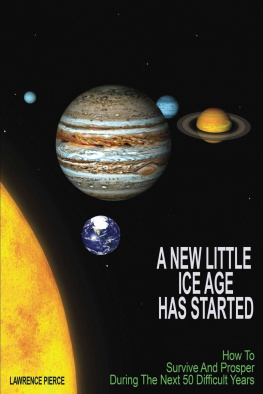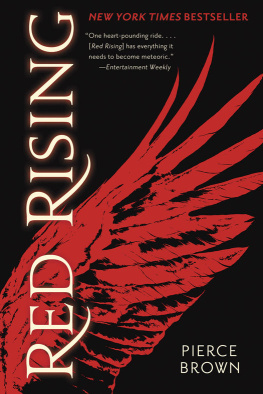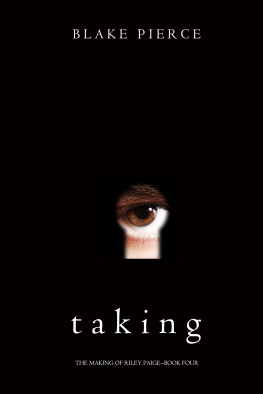JACK PIERCE
THE MAN BEHIND THE MONSTERS

Special Commemorative Magazine
visionary

m e d i a
Theres not one of us in this industry who wouldnt love to create another Frankenstein Monster as well as Jack Pierce did in that original film. Theres not one of us who doesnt look at that make-up in absolute and total adoration. We admire what he did and when you think of how did itwith cotton and collodionit was a brilliant character. Were all still trying to achieve that level of genius. Not for the fame of it; just for our own self-satisfaction.
--- Tom Burman, January 1996

J ACK PIERCE
THE MAN BEHIND THE M O NSTERS Written and Published by - Editor-
Extra Photo Contributors
Illustrations - Ray
Scott Essman Carsten Dau Ron Borst Perry Shields Galen Wilkes SPOOKY Santoleri
VISIONARY MEDIA Contact: P.O. Box 1722
Glendora, CA 91740
PHONE (626) 963-0635
FAX (626) 963-0235
Publishers E-Mail: scottessman@yahoo.com Editors E-Mail: batroc@earthlink.net
Special Thanks Sara Karloff, Bla Lugosi, JR ., Ron Chaney, plus Bob Burns, Carmen Dirigo, Alan Young, Doug Norwine
Contents copyright 2000, visionary media. All rights reserved.
Photographs used solely for publicity purposes.
CENTURY of CREATURE PEOPLE 1900-1980 Advertisement Designed by Ada Guerin (Item will be published in summer, 2000)
the early years


Janus Piccoulas a Greek immigrant, born on May 5, 1889 must have been shattered when, having moved from his first American city, Chicago, to Los Angeles to play professional baseball, he was told that he was too little. Though he had been a semi-pro shortstop in Chicago, at 56, Janus was a victim of the first decade of the 1900s, a time when ballplayers were getting bigger and strongerlike the legendary Ty Cobb, who stood 61 and was a sleek 175 pounds. However, if Janus had made that California Coast League team, he may never have become the Jack Pierce that made cinema history in the decades to come. Not long after his dream of a career in sports faded, Janus chose to Americanize his name and married an American woman, Blanche Craven. His family subsequently rejected him, but in the first decade of the 20th century, Southern California was the land of opportunity, and 20-ish Jack Pierce quickly began his ascent in the fledgling motion picture industry. Pierces first real jobs were as a theater projectionist and later a theater chain manager for Harry Culver (top left) in the early 1910s. Culver had founded Culver City, offering land to any entrepreneur who pledged to build a studioone who took his offer was producer Thomas Ince. Pierce fit in well amongst these early 20th century dreamers, and began to work on movie sets for Ince and other studios including Vitagraph and a new studio formed by another ex-Chicagoan, Carl Laemmle. Pierce wore many hats, serving as a camera loader, assistant director, bit player and stuntman. He once claimed that his going price was $1 per fall! By 1915, Pierce was employed on a regular basis at the biggest studio in existence Universal City (above right and below left). Established by Laemmle, Universal City produced many silent shorts in the 1910s, and Pierce often worked on their skeletal crews (as the one pictured below right, in 1921). But Jack Pierce was only starting to make his way in Hollywood.


pierce in hollywood

As Jack Pierce slowly forged a film career in Hollywood during the 1910s, one aspect of filmmaking especially called to him. Though he had been a stuntman and bit player on early film crews, Pierce wanted to take his performing skills to the next level. Much like other aspiring actors of the time who lacked the movie star good looks of a Rudolph Valentino or the swashbuckling screen presence of a Douglas Fairbanks, Pierce endeavored to get parts in films by transforming himself into any character that a movie called for. Along with performers such as Lon Chaney and Jack Dawn two future makeup masters who got regular work acting in films Jack Pierce developed an extensive rsum of character parts in the films of Vitagraph, Universal and other studios in the 1910s (left and below). Still, his acting career was somewhat of a side gig as he still earned the bulk of his living working behind the camera, eventually moving up to assistant director on many of his sets.
By the early 1920s, Pierce had been working in the business for nearly 15 years, but his acting career had failed to blossom. At Universal, he almost certainly formed a relationship with Lon Chaney who was a contract player at the studio until 1918. Chaney, of course, was the master of transforming himself to suit a film role, and Pierce surely developed his trade using Chaneys tutelage, at least to some degree. When Chaney left to freelance, only rarely returning to Universal for legendary performances in Hunchback of Notre Dame (1923) and Phantom of the Opera (1925), Pierce probably saw the opportunity to become Universals next chameleon-esque actor who could play any part a script required, making use of his nascent makeup skills.

first significant makeups



BIll Fox, founder of Fox Pictures, who later merged with 20th Century Films to form 20th Century Fox Studios. In 1926, his studio gave Jack Pierce his first key makeup job.
In 1928, Universal brought Jack Pierce back to his home studio when they put a film into production that was originally intended as a Lon Chaney vehicle. Although Chaney was ultimately unable to participate, Carl Laemmle Sr. finally planned to shoot a big screen version of Victor Hugos The Man Who Laughs. Shepherded by Laemmles son, 20-year-old associate producer Carl Laemmle Jr., Universals The Man Who Laughs told the tragic story of Gwynplaine, the victim of an aristocratic dispute who has had a wicked grin carved into his face. In place of Chaney, the Laemmles used fellow German Conrad Veidt, the star of The Cabinet of Dr. Caligari . In Pierce, Laemmle Sr. realized that he had the in-house talent to realize the demands of the Gwynplaine makeup. Pierces conception (below and opposite below) suggests a pathetic but demonic figure, and the lavish film set new standards for its costume design (by Vera West) and production values. In Veidt, Pierce had the perfect material from which to create his magic; Bob Kanes conception of The Joker in the Batman comics owes much to Pierces Gwynplaine makeup. One can only speculate what Pierce and Veidt might have concocted if the latter had been cast in the many Universal monster vehicles to come, but the actor, sensing the introduction of sound to motion pictures, returned to Germany where his thick accent would not inhibit his career. Nonetheless, The Man Who Laughs stands as an early example of excellence in an actor-makeup artist collaboration.
Next page
























